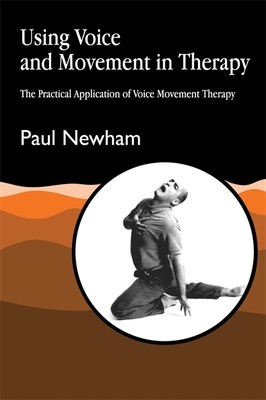
- We will send in 10–14 business days.
- Author: Paul Newham
- Publisher: Jessica Kingsley Publishers
- Year: 1999
- Pages: 200
- ISBN-10: 1853025925
- ISBN-13: 9781853025921
- Format: 15.8 x 23.2 x 1.2 cm, minkšti viršeliai
- Language: English
- SAVE -10% with code: EXTRA
Reviews
Description
Using Voice and Movement in Therapy is a practical and imaginative guide to the way in which physical movement and the expressive use of the voice can facilitate therapy. Paul Newham examines how massage, manipulation and dance, combined with vocal expression, can alleviate certain emotional, psychosomatic and psychological symptoms. His book provides practical support for non-clinical professionals, working as group leaders and facilitators, who aim to incorporate singing and vocal expression into their working method as a means to initiate social interaction and self-empowerment.
The author draws on his own professional experience to describe therapeutic techniques and exercises which he has found to be effective, illustrating these with case studies. In particular, he focuses on the benefits of voicework for use with some of the most frequently occurring emotional, psychological and psychosomatic difficulties experienced by people in expressive therapy. This is the first of three volumes which will rectify the dearth of practical information on the therapeutic use of vocal expression within psychotherapy, arts therapies and group process. The three books will form an exploration of how singing and vocal sound-making can contribute to an artistically orientated psychotherapeutic process, and will be a source of inspiration for practitioners.EXTRA 10 % discount with code: EXTRA
The promotion ends in 22d.16:33:18
The discount code is valid when purchasing from 10 €. Discounts do not stack.
- Author: Paul Newham
- Publisher: Jessica Kingsley Publishers
- Year: 1999
- Pages: 200
- ISBN-10: 1853025925
- ISBN-13: 9781853025921
- Format: 15.8 x 23.2 x 1.2 cm, minkšti viršeliai
- Language: English English
Using Voice and Movement in Therapy is a practical and imaginative guide to the way in which physical movement and the expressive use of the voice can facilitate therapy. Paul Newham examines how massage, manipulation and dance, combined with vocal expression, can alleviate certain emotional, psychosomatic and psychological symptoms. His book provides practical support for non-clinical professionals, working as group leaders and facilitators, who aim to incorporate singing and vocal expression into their working method as a means to initiate social interaction and self-empowerment.
The author draws on his own professional experience to describe therapeutic techniques and exercises which he has found to be effective, illustrating these with case studies. In particular, he focuses on the benefits of voicework for use with some of the most frequently occurring emotional, psychological and psychosomatic difficulties experienced by people in expressive therapy. This is the first of three volumes which will rectify the dearth of practical information on the therapeutic use of vocal expression within psychotherapy, arts therapies and group process. The three books will form an exploration of how singing and vocal sound-making can contribute to an artistically orientated psychotherapeutic process, and will be a source of inspiration for practitioners.

Reviews